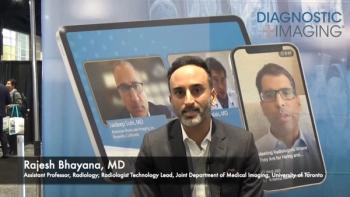
Radiologists lose angioplasty, stent procedure volume to cardiologists and surgeons
As percutaneous transluminal angioplasty and stent placement replaces bypass surgery in the treatment of peripheral arterial disease, cardiologists and surgeons now are performing far more of the procedures than radiologists, according to research presented Thursday at the RSNA meeting.
As percutaneous transluminal angioplasty and stent placement replaces bypass surgery in the treatment of peripheral arterial disease, cardiologists and surgeons now are performing far more of the procedures than radiologists, according to research presented Thursday at the RSNA meeting.
A study using Medicare databases for 1996 through 2006 showed that the number of percutaneous transluminal angioplasty and stent procedures increased by 213% (from 240 to 751 per 100,000 patients) in that time. During the same decade, bypass surgery saw a 47% decline (from 321 to 170).
The utilization rate of peripheral angioplasty and stenting among surgeons who do the procedures mushroomed by 1095% (from 21 to 251 per 100,000 Medicare beneficiaries). Among cardiologists who perform the procedures, the rate grew by 395% (from 55 to 272 per 100,000). Meanwhile, the utilization rate among radiologists increased by only 24% (from 151 to 187).
In 1996, radiologists performed far more of the procedures than either cardiologists or surgeons.
But the research showed that the market share for radiologists declined in the study period from 63% to 25%, while for cardiologists it climbed from 23% to 36%, and for surgeons the share rose dramatically, from 9% to 33%.
Dr. David Levin, a professor of interventional radiology at the Thomas Jefferson University Hospital's Center for Research on Utilization of Imaging Services, in Philadelphia, who oversaw the study, said that radiologists still have a role in the procedure but added that the situation needs to be monitored.
"The only logical explanation would appear to be self-referral," he said of the dropoff.
When questioned further about the declining number of radiologists doing the procedure, Levin responded that fewer residents are going into the intervention subspecialty.
"We have to keep fighting the battle against self-referral in all areas of radiology," Levin said.
He noted that self-referral inevitably leads to overutilization.
But Dr. R. Torrance Andrews, an associate professor and chief of vascular and interventional radiology at the University of Washington Medical Center in Seattle, disagreed with Levin's conclusion, asserting that surgeons and cardiologists are simply becoming more aggressive in going after patients in need of such treatment.
"We're not reaching out and mining these patients," Andrews said. "They're just better at getting patients into the system than we are."
Levin responded that, unlike interventional radiologists, cardiologists and surgeons are primary care physicians.
But Andrews predicted the death of interventional radiology unless radiologists step up their efforts to do more of the procedures.
Newsletter
Stay at the forefront of radiology with the Diagnostic Imaging newsletter, delivering the latest news, clinical insights, and imaging advancements for today’s radiologists.




























